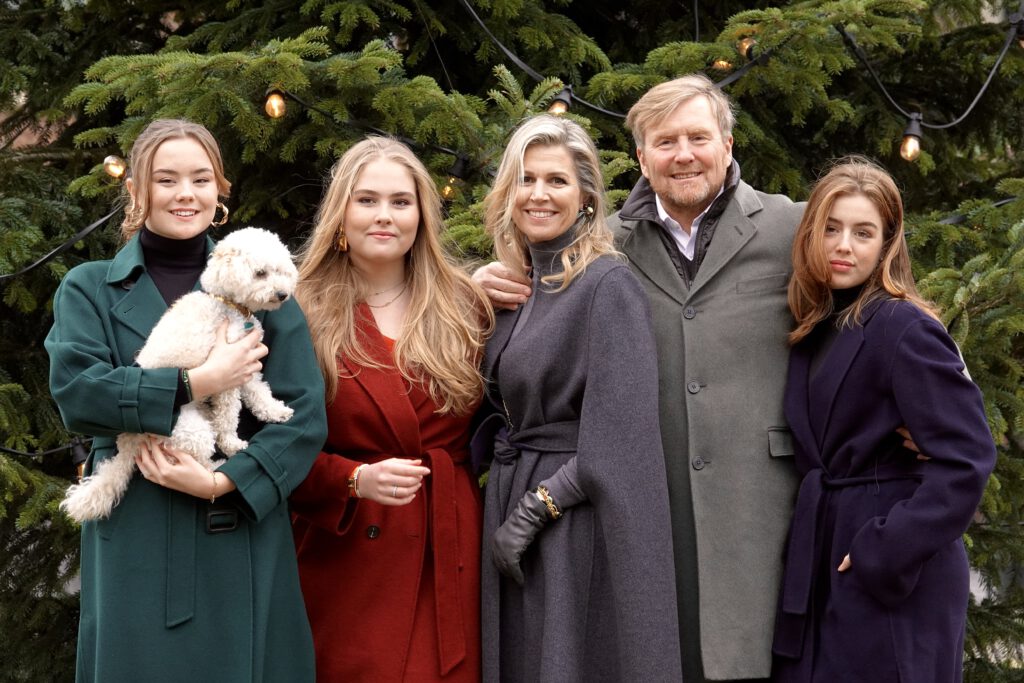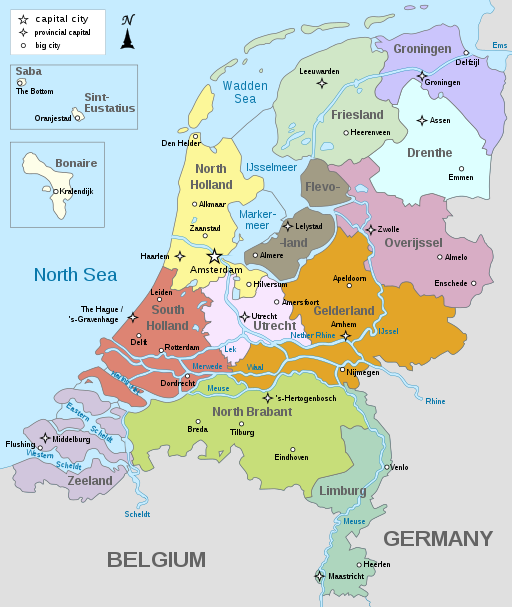A lot of visitors to the Netherlands refer to Holland in the same way as they would the Netherlands. They think the two are one and the same, but unfortunately, they’re wrong. So, what is the difference between Holland and the Netherlands?
It’s a mistake we’ve probably all made at some point in our lives (at least us internationals, that is), and it makes sense! The names “Holland” and “the Netherlands” are often used interchangeably in popular culture.
The history behind “Holland” vs “the Netherlands”
To really understand the difference between Holland and the Netherlands, one must, first of all, know the history of the Netherlands. So here’s a short lesson. 🤓
The Netherlands is a kingdom that was founded after Napoleon’s defeat in 1815. At the time, it included Belgium.
After Belgium’s secession in 1830, the map of the Netherlands was redrawn, and this proud, wonderful country as we know it today was born.

Let me take you back to the Batavian Republic. You know what? I’ll go even further and take you back to the Republic of the Seven United Netherlands. Lots of republics, right? Yeah, I know.
The Republic of the Seven United Netherlands existed from 1588 until 1795. It emerged when a part of the Netherlands separated from Spanish rule after the Eighty Years War or the Dutch War of Independence.
The war was a revolt against King Philip II of Spain by the Seventeen Provinces of modern-day the Netherlands, Belgium, and Luxembourg, as well as the French region of Hauts-de-France. The Seven United Netherlands was made up of:
- The Duchy of Guelders (Gelderland in Dutch)
- The County of Holland
- The County of Zeeland
- The Lordship of Utrecht
- The Lordship of Overijssel
- The Lordship of Frisia
- The Lordship of Groningen and Ommelanden
The Republic’s seven provinces each had their own independent governments and were very powerful. During the period in question (the late 16th and 17th centuries), the provinces dominated world trade, conquered a large colonial empire, and had the largest fleet of merchantmen.
The County of Holland was one of the wealthiest and most urbanised regions in the world at that time.
In 1795, French troops conquered the Republic. It became known as the Batavian Republic in 1806 when Napoleon appointed his brother, Louis, as King and turned the country into a kingdom.
READ MORE | The 19 biggest differences between France and the Netherlands
After Napoleon Bonaparte’s defeat, William VI of Orange was invited to assume power as the “Sovereign Prince.”
He landed in Scheveningen on November 30, 1813, and two years later, on March 16, 1815, the United Kingdom of the Netherlands was proclaimed.
This kingdom was the fusion of territories that used to belong to the Batavian Republic, the Austrian Netherlands, and the Prince-Bishopric of Liège.
READ MORE | That time the Dutch conquered Britain (ja, we’re serious)
As history would have it, though, this United Kingdom of the Netherlands came to an end with the secession of Belgium.
Belgium went its own way, the map of the Kingdom was redrawn, and, just like that, The Kingdom of the Netherlands as we know it today was born.
Let’s summarise it
- The Dutch fought the Spanish for their independence, and when they got it, they formed the Seven United Netherlands.
- When the Dutch were conquered by Napoleon Bonaparte, he made his brother King and thus, the Batavian Republic was born.
- After Napoleon’s defeat, William VI of Orange became King of the United Kingdom of the Netherlands.
- William VI of Orange’s kingdom didn’t last long because Belgium wanted its independence.
- After Belgium left in 1830, the map was redrawn, and the Netherlands as we know it today came to be.
Today’s provinces
The Netherlands consists of 12 provinces: Groningen, Friesland, Drenthe, Overijssel, Flevoland, Gelderland, Utrecht, North Holland, South Holland, Zealand, North Brabant, and Limburg.
Two of these 12 provinces include the name Holland: North Holland and South Holland.
Blame it on the sailors
The confusion surrounding the difference between Holland and the Netherlands must have started as a result of Dutch sailors. These sailors were known to have sailed the open seas during the Golden Age in search of new land, trade routes, and spices.
On their travels, they only mentioned the names of the city-states they hailed from when asked about their origins. A Dutch sailor could tell a fellow trader that he was from South Holland or North Holland when asked where he came from.
Understandably, this made many people think that Holland was a country. It must have been quite confusing because, at that time, a united Netherlands did not exist as a country.
Today, the official name of the country is the Kingdom of the Netherlands. King Willem-Alexander is the King, and “Holland” actually refers to the two provinces of “Noord-Holland” and “Zuid-Holland”, which, translated to English, would mean North Holland and South Holland.
So, dear visitors, what is the difference between Holland and the Netherlands? Holland is simply two provinces in the Netherlands.
Have you also mistaken Holland for the Netherlands? What do you find the most confusing? Tell us in the comments below!






Great video…..however…why does the commentator have to talk sooo fast??? It doesn’t give the viewer time to absorb what is being shared here. Also the pronunciation, dear commentator, leaves to be desired. At least take time out perhaps to learn the correct pronunciation? That would have completed this video with an A+ !! <3
Very nice explanation Chuka. Really liked it.
Thanks, Raja. Glad you liked it.
You should also explain why people from the Netherlands are called Dutch. I refuse to call myself Dutch. As Dutch really means “Duits” and I am not Duits. ( by the way I have nothing against the Duitsers ?)
Great!! So clear right now.
Dutch does not mean Duits, that’s Deutsch.
The reason behind Dutch is because the English speaking people called the people of The Netherlands (low Dutch) and the people of Germany (high Dutch). Dutch meant people or nation. There was no The Netherlands at that time. They needed to know who they were referring to. And it kind of stuck.
What about, On 1 January 2020 the name Holland officially ceases to exist as a designation of the Netherlands State.
molto interessante